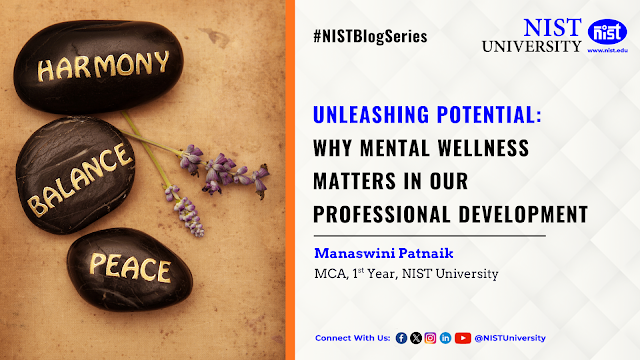STILL THINK ANCIENT PREDICTIONS WERE SUPERSTITIONS? LET’S TALK ALGORITHMS.
Where Science Meets Story:
Let’s be honest-when we hear about ancient
Indian texts predicting eclipses, personality traits, or health outcomes, many
of us instinctively dismiss them as superstition or myth. We revere Python code
and machine learning models, while often brushing off ancient systems like
Jyotisha or Ayurveda as folklore.
But what if we’ve misunderstood?
What if these practices, now seen as “blind
faith,” were actually based on structured
observation, data modeling, and predictive reasoning—just using a
different vocabulary?
This article invites you to take a rational
look at ancient Indian knowledge systems through the lens of modern business analytics and data science.
Rishis as the First Data Scientists:
The ancient rishis of Bharat weren’t just meditative sages-they were keen observers of patterns, designers of systems, and teachers of causal logic. Whether they were studying stars, health, governance, or the human psyche, their methods reflected deep analytical thinking.
- Rishi Kanada’s Vaisheshika Sutra organized the universe into atoms and categories, much like a relational database.
- Patanjali in the Yoga Sutras categorized mental states into five types-essentially, cognitive segmentation.
- Sushruta and Charaka identified disease progressions using systematic diagnostics akin to decision trees.
This isn’t mythology. It’s the earliest form
of knowledge analytics.
Mapping Ancient Models to Modern Techniques:
Let’s see how some of these systems align
closely with what we now call data science:
|
Ancient System |
Focus Area |
Modern Equivalent |
|
Vedanga Jyotisha |
Astronomical pattern
prediction |
Time Series Forecasting
(ARIMA, Seasonal) |
|
Arthashastra |
Risk & market
forecasting |
Predictive Modeling,
Risk Scoring |
|
Ayurveda |
Disease prognosis |
Diagnostic
Classification, Personalized Medicine |
|
Laghu Bhaskariya |
Planetary interpolation |
Regression Models,
Numerical Estimation |
|
Garga Samhita |
Personality & life
predictions |
Decision Trees,
Psychographic Segmentation |
These weren’t guesses or magic—they were
logical extrapolations based on long-term observational
data.
Pattern Recognition-The Common Thread:
At its core, prediction is pattern recognition.
Modern algorithms learn from data to predict
future trends. The same principle was at play when Jyotishis mapped nakshatra
positions to seasonal changes, or when Ayurvedic vaidyas predicted disease
onset based on doshic imbalances.
Even if every outcome wasn’t 100% accurate,
the approach
was analytical:
observe
→ categorize → correlate → forecast.
Isn't that what we do in data science?
Shlokas That Reveal Rational Thinking:
Several ancient texts explicitly show structured thinking and logic:
- Vaisheshika Sutra 1.1.4: “Dravyaguṇakarmasāmānyaviśeṣasamavāyānām padārthānām...” Analysis of categories—substance, quality, action, generality, particularity, inherence.
Clearly defines ontology—like a modern data schema.
- Yoga Sutra 1.5:“Vṛttayaḥ pañcatayyaḥ kliṣṭākliṣṭāḥ” The fluctuations of the mind are of five types, painful or not.
Psychological classification similar to behavioral analytics.
- Charaka Samhita: “Trividham roga-mārgaṇ – śārīraṇ, mānasaṇ, ubhayaṇ ca” Disease manifests physically, mentally, or both.
Logical segmentation of health conditions.
These are not poetic metaphors—they are logical taxonomies.
Why This Matters Today:
Dismissing ancient systems as mere superstition causes us to:
- Undervalue indigenous knowledge.
- Miss out on holistic approaches to problem-solving.
- Lose historical context behind concepts like systems thinking, causal inference, and forecast modeling.
Revisiting these frameworks with modern tools
doesn’t dilute their authenticity—it amplifies
their relevance.This is especially empowering for students, analysts, and
leaders seeking to blend tradition with
innovation.
Time to Reframe the Narrative:
Are we suggesting every Vedic prediction was
100% accurate? No. Are we saying we should treat ancient systems as early forms
of analytics and structured reasoning? Absolutely.
The rishis may not have used R or Python, but
they deeply understood patterns, probabilities, and systems. What we now call “data science” may just be a
continuation—wrapped in new language—of what they intuitively practiced.
So, next time you hear someone scoff at ancient Indian knowledge, ask: “What if it was analytics all along?” It’s time to reconnect with the wisdom we’ve mislabeled—and reframe “superstition” as a steppingstone to science.
Author: Swetaleena Panda, Adjunct Faculty, Department of Management Studies
Stay tuned for more such updates on our official social media: https://linktr.ee/NISTUniversity





Comments
Post a Comment